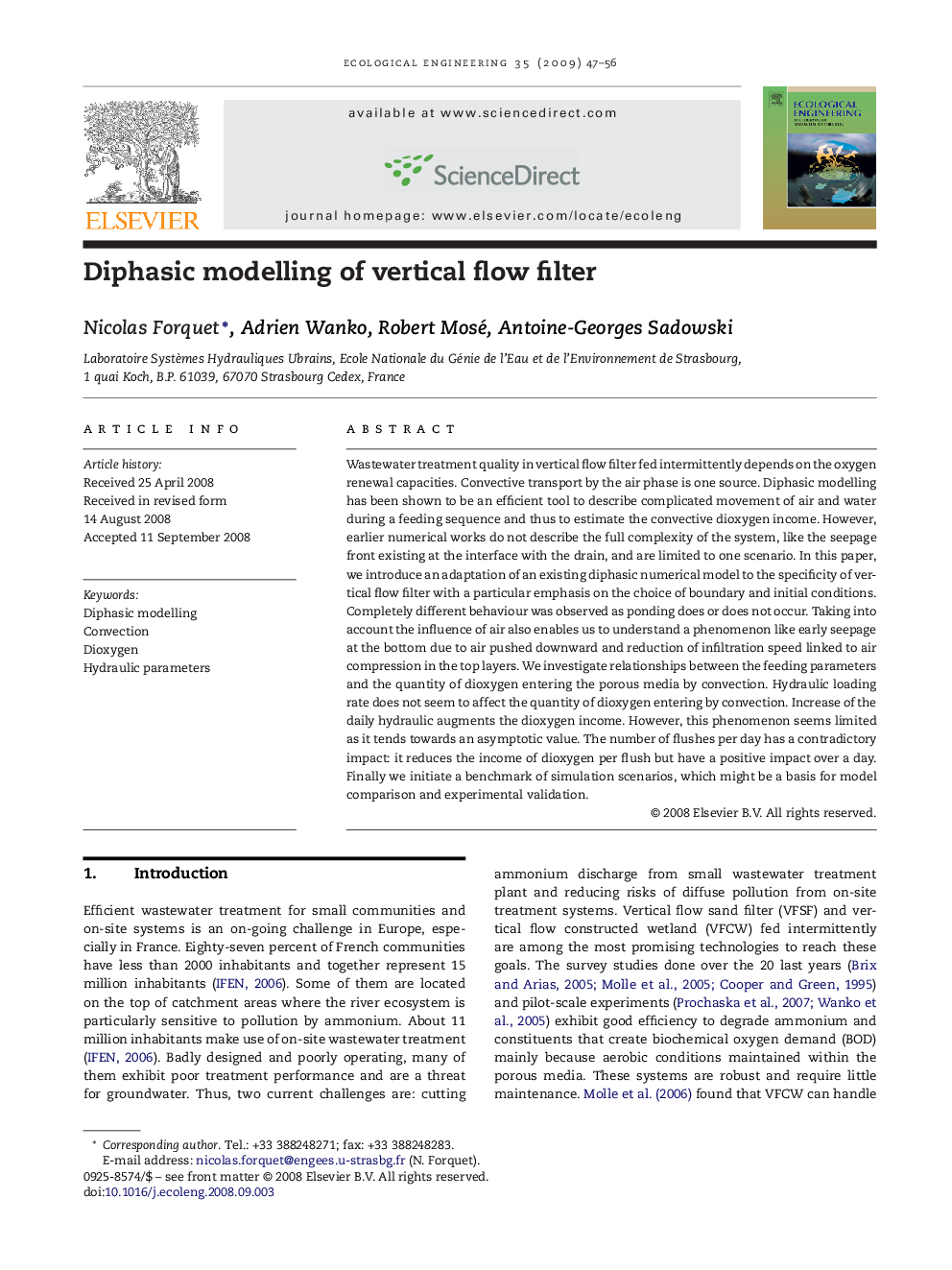| Article ID | Journal | Published Year | Pages | File Type |
|---|---|---|---|---|
| 4390660 | Ecological Engineering | 2009 | 10 Pages |
Wastewater treatment quality in vertical flow filter fed intermittently depends on the oxygen renewal capacities. Convective transport by the air phase is one source. Diphasic modelling has been shown to be an efficient tool to describe complicated movement of air and water during a feeding sequence and thus to estimate the convective dioxygen income. However, earlier numerical works do not describe the full complexity of the system, like the seepage front existing at the interface with the drain, and are limited to one scenario. In this paper, we introduce an adaptation of an existing diphasic numerical model to the specificity of vertical flow filter with a particular emphasis on the choice of boundary and initial conditions. Completely different behaviour was observed as ponding does or does not occur. Taking into account the influence of air also enables us to understand a phenomenon like early seepage at the bottom due to air pushed downward and reduction of infiltration speed linked to air compression in the top layers. We investigate relationships between the feeding parameters and the quantity of dioxygen entering the porous media by convection. Hydraulic loading rate does not seem to affect the quantity of dioxygen entering by convection. Increase of the daily hydraulic augments the dioxygen income. However, this phenomenon seems limited as it tends towards an asymptotic value. The number of flushes per day has a contradictory impact: it reduces the income of dioxygen per flush but have a positive impact over a day. Finally we initiate a benchmark of simulation scenarios, which might be a basis for model comparison and experimental validation.
